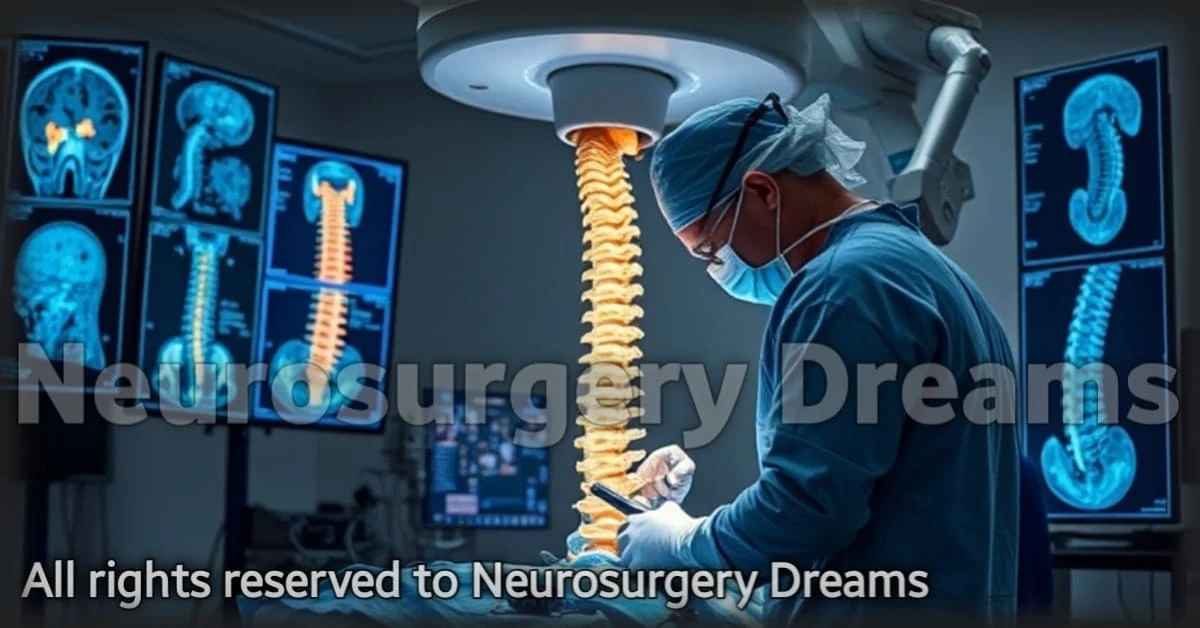Advances in Neurosurgical Treatment of Spinal Cord Injuries: New Frontiers
Introduction
Spinal cord injuries (SCIs) are among the most devastating injuries that can occur, often leading to permanent disability or paralysis. Advances in neurosurgery have provided new hope for patients with spinal cord injuries, improving both the quality of life and the chances for recovery. This article examines the latest innovations in neurosurgical treatments for spinal cord injuries, including novel surgical techniques, cellular therapies, and rehabilitation strategies.
Types of Spinal Cord Injuries
Spinal cord injuries are classified into two primary categories: traumatic and non-traumatic. Traumatic injuries are typically caused by accidents, falls, or violence, while non-traumatic injuries can result from diseases such as tumors, infections, or degenerative conditions like multiple sclerosis. The severity of the injury depends on the level of the spinal cord affected and whether the injury is complete (total loss of function) or incomplete (partial loss of function).
Minimally Invasive Neurosurgery for Spinal Cord Injuries
Minimally invasive surgery (MIS) has revolutionized the treatment of spinal cord injuries by reducing the invasiveness of procedures and promoting faster recovery. Techniques such as endoscopic spinal surgery and percutaneous fixation have made it possible to treat spinal injuries with smaller incisions, less muscle dissection, and lower risks of complications. MIS allows for quicker recovery times, fewer hospitalizations, and improved outcomes in many cases of spinal cord injury.
Spinal Cord Regeneration and Stem Cell Therapy
One of the most exciting areas of research in neurosurgery is the potential for spinal cord regeneration through stem cell therapy. Researchers are exploring the use of stem cells to promote healing and repair of damaged spinal cord tissue. Various types of stem cells, including neural stem cells and induced pluripotent stem cells (iPSCs), have shown promise in animal models for enhancing nerve regeneration and restoring lost function. Clinical trials are currently underway to test the effectiveness of these therapies in humans.
Robotic-Assisted Surgery for Spinal Cord Injuries
Robotic-assisted surgery is becoming an increasingly important tool in the treatment of spinal cord injuries. Robotic systems offer unparalleled precision and control during spinal surgeries, which is crucial for minimizing damage to delicate spinal structures. Surgeons can use robotic technology to perform more accurate decompressions, realignments, and fusions. These advancements lead to improved surgical outcomes and reduced complication rates for patients with spinal cord injuries.
Intraoperative Spinal Cord Monitoring
Intraoperative spinal cord monitoring (SCM) is a vital technique that helps neurosurgeons assess the function of the spinal cord during surgery. By using methods such as electromyography (EMG), somatosensory evoked potentials (SSEPs), and motor evoked potentials (MEPs), surgeons can monitor the integrity of the spinal cord and surrounding neural pathways in real-time. This allows for immediate intervention if any signs of injury or dysfunction are detected, improving the safety and effectiveness of spinal surgery.
Rehabilitation and Post-Surgical Care
Post-surgical rehabilitation is a crucial component of spinal cord injury treatment. After surgery, patients often require a combination of physical therapy, occupational therapy, and other rehabilitation services to help them regain mobility and independence. Advanced rehabilitation technologies, including robotic exoskeletons and functional electrical stimulation, are helping patients recover function more quickly and effectively. These innovations in rehabilitation are making a significant difference in the quality of life for spinal cord injury patients.
Challenges in Spinal Cord Injury Treatment
Despite the significant progress in neurosurgery and spinal injury research, challenges remain in the treatment of spinal cord injuries. One of the main obstacles is the limited ability to repair nerve damage in the spinal cord, which differs from peripheral nerve damage. The spinal cord's complex structure and the delicate nature of nerve fibers make complete recovery difficult. Additionally, the risk of complications such as infection, bleeding, or further damage to the spinal cord during surgery remains a concern.
The Future of Spinal Cord Injury Treatment
The future of spinal cord injury treatment looks promising, with ongoing research into advanced therapies like gene editing, nanotechnology, and personalized medicine. Breakthroughs in understanding the biology of spinal cord injuries and the development of new treatment strategies are likely to improve outcomes for patients in the coming years. The integration of novel technologies, combined with traditional surgical techniques, may lead to more effective treatments and a better quality of life for those with spinal cord injuries.
Conclusion
Neurosurgery has made remarkable strides in the treatment of spinal cord injuries, offering new hope for patients who previously had limited options for recovery. Minimally invasive techniques, stem cell therapies, robotic-assisted surgeries, and advanced rehabilitation methods are transforming the landscape of spinal cord injury treatment. While there are still challenges to overcome, the future holds great promise for patients living with spinal cord injuries, with new technologies and innovations likely to continue improving both survival rates and quality of life.

